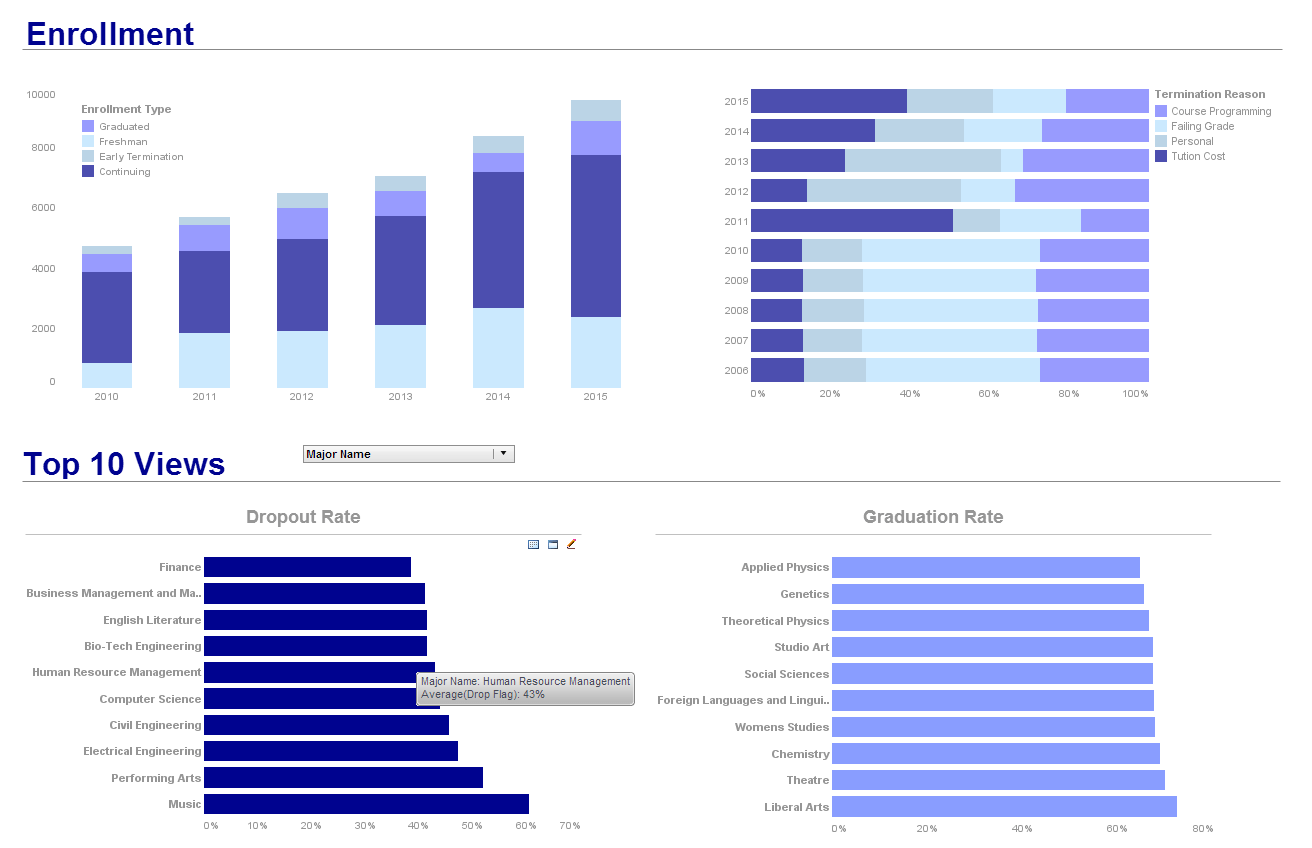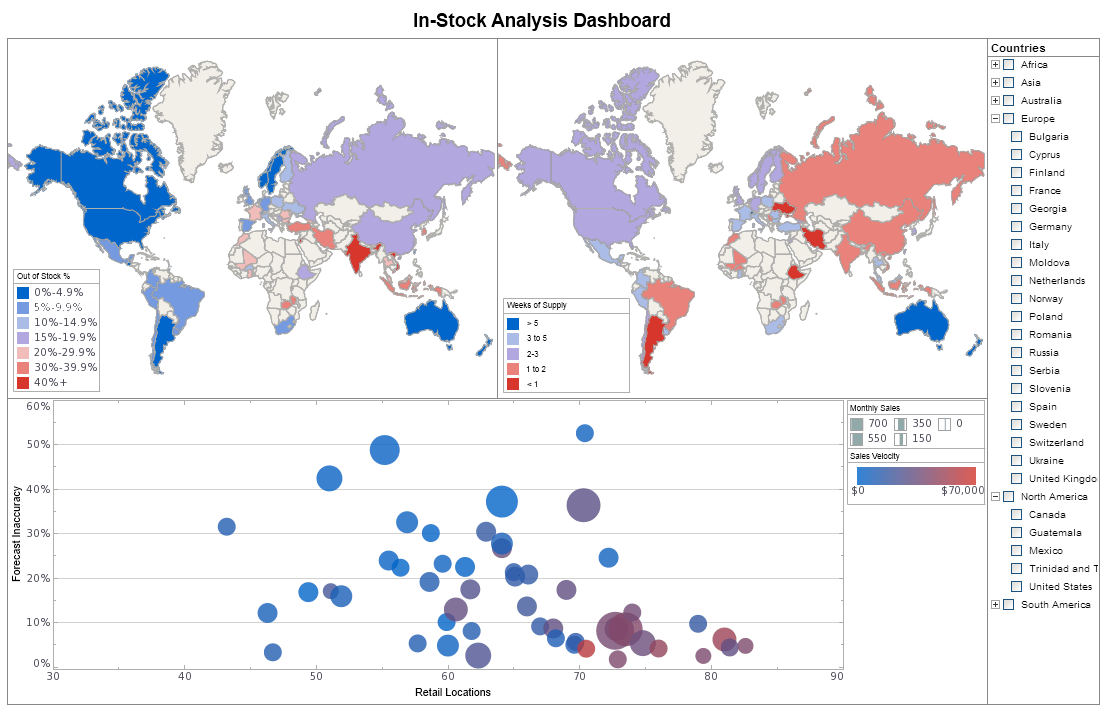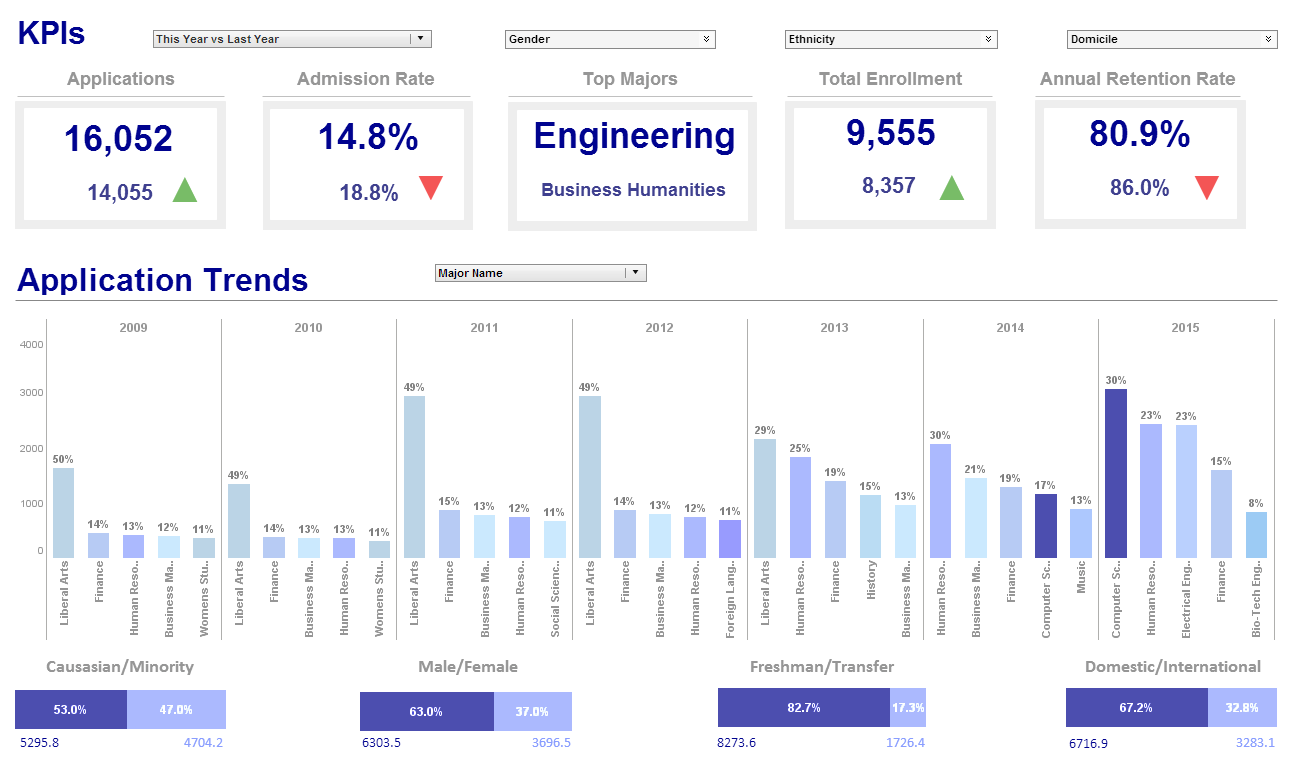Download InetSoft's Business Dashboard Application
Are you looking to download a good business dashboard application? Since 1996 InetSoft has been making dashboard software that is easy to deploy and easy to use. Build self-service oriented dashboards quickly . View a demo and download a free version.



Why InetSoft?
InetSoft's business dashboard product is easy enough to be:
- Deployed in just weeks
- Learned by end users with minimal training
- Used by any executive without the aid of IT
- Adaptable to changing data and business needs
- Used for data exploration through visualization
- Capable of maximum self-service
- Attract the attention of executives
- Meet the demands of power users
- Scale up for organizations of any size
Evaluate h3Style Scopeh3 from h3InetSofth3. It's Easy. Agile. & Robust.
Register for more info and free software software
About InetSoft
Since 1996 InetSoft has been delivering easy, agile, and robust business intelligence software that makes it possible for organizations and solution providers of all sizes to deploy or embed full-featured business intelligence solutions. Application highlights include visually-compelling and interactive dashboards that ensure greater end-user adoption plus pixel-perfect report generation, scheduling, and bursting. InetSoft's patent pending Data Block™ technology enables productive reuse of queries and a unique capability for end-user defined data mashup.
This capability combined with efficient information access enabled by InetSoft's visual analysis technologies allows maximum self-service that benefits the average business user, the IT administrator, and the developer. InetSoft was rated #1 in Butler Analytics Business Analytics Yearbook, and InetSoft's BI solutions have been deployed at over 5,000 organizations worldwide, including 25% of Fortune 500 companies, spanning all types of industries.

What KPIs and Metrics Do Commercial Yellowfin Tuna Fishing Enterprises Track in Dashboards?
Commercial yellowfin tuna fishing enterprises typically track several key performance indicators (KPIs) and metrics in their dashboards to monitor and manage their operations effectively. These KPIs help them assess various aspects of their business performance and make data-driven decisions. Here are some common KPIs along with their definitions and significance in performance management:
-
Catch Volume: The total weight or quantity of yellowfin tuna caught within a specific time period, usually measured in metric tons. This KPI helps assess the productivity and efficiency of fishing operations.
-
Catch Rate: The average amount of yellowfin tuna caught per unit of effort, such as per fishing trip or per day. It indicates the effectiveness of fishing methods and the abundance of tuna stocks in the fishing grounds.
-
Yield Percentage: The percentage of usable tuna obtained from the total catch after processing, which includes cleaning, gutting, and filleting. This KPI measures the efficiency of processing operations and helps optimize resource utilization.
-
Average Size of Tuna: The average weight or length of yellowfin tuna caught, providing insights into the size distribution of the catch and the health of tuna populations.
-
Fishing Effort: The amount of time, fuel, manpower, and resources expended on fishing activities, including vessel operation, gear deployment, and navigation. Monitoring fishing effort helps optimize resource allocation and cost management.
-
Fuel Efficiency: The amount of fuel consumed per unit of catch or distance traveled by fishing vessels. Improving fuel efficiency reduces operating costs and environmental impact.
-
Bycatch Rate: The proportion of non-target species caught incidentally during tuna fishing operations, such as dolphins, sea turtles, and sharks. Minimizing bycatch helps promote sustainable fishing practices and compliance with regulations.
-
Fishing Gear Performance: Metrics related to the effectiveness, durability, and maintenance of fishing gear, such as hooks, lines, nets, and traps. Monitoring gear performance ensures optimal fishing success and reduces equipment downtime.
-
Market Price: The prevailing market price of yellowfin tuna, which fluctuates based on factors such as demand, supply, and quality. Tracking market prices helps optimize selling strategies and revenue generation.
-
Compliance with Regulations: Metrics related to adherence to fishing regulations, quotas, licensing requirements, and conservation measures imposed by regulatory authorities and international agreements. Compliance ensures legal operation and sustainable resource management.
How Is Artificial Intelligence Used in Aquaculture?
Artificial intelligence (AI) is increasingly being used in aquaculture to enhance various aspects of fish farming operations, improve efficiency, and promote sustainability. Here are several ways AI is employed in aquaculture:
-
Environmental Monitoring: AI-powered sensors and monitoring systems are used to collect real-time data on water quality parameters such as temperature, dissolved oxygen, pH levels, and nutrient concentrations. Machine learning algorithms analyze this data to detect trends, identify anomalies, and predict potential environmental issues, enabling fish farmers to take timely corrective actions and maintain optimal conditions for fish health and growth.
-
Feeding Optimization: AI algorithms are utilized to optimize feeding practices in aquaculture facilities. By analyzing factors such as fish behavior, feeding patterns, water quality, and nutritional requirements, AI systems can develop adaptive feeding schedules and adjust feed quantities based on the specific needs of the fish population. This helps reduce feed waste, improve feed conversion ratios, and enhance overall productivity while minimizing environmental impact.
-
Fish Health Monitoring: AI-based image recognition and computer vision techniques are employed to monitor fish health and detect signs of disease or stress. Cameras installed in aquaculture tanks capture images of fish behavior, appearance, and movement, which are analyzed using machine learning algorithms to identify abnormal patterns or symptoms indicative of health issues. Early detection allows fish farmers to implement timely interventions, such as disease treatment or environmental adjustments, to prevent outbreaks and minimize losses.
-
Predictive Analytics: AI-driven predictive analytics models are used to forecast key variables and outcomes in aquaculture operations, such as fish growth rates, biomass accumulation, feed consumption, and market demand. By analyzing historical data, environmental factors, and operational parameters, these models can generate insights and predictions that enable fish farmers to optimize production planning, resource allocation, and decision-making processes, thereby improving efficiency and profitability.
-
Water Quality Management: AI-powered systems are employed to optimize water treatment processes and maintain optimal water quality conditions in aquaculture facilities. By continuously monitoring water parameters and analyzing data in real-time, AI algorithms can automatically control equipment such as aeration systems, filtration units, and chemical dosing pumps to ensure proper water circulation, oxygenation, and decontamination, thus supporting fish health and welfare.
-
Supply Chain Management: AI technologies are utilized to optimize supply chain logistics and operations in the aquaculture industry. Predictive analytics and machine learning algorithms are employed to forecast demand, optimize inventory levels, plan transportation routes, and schedule deliveries of fish products to markets and processing facilities. This helps reduce costs, minimize waste, and improve overall efficiency throughout the supply chain.
More Articles About Dashboards in Business
Analytics Transforming Recruiting - Data analytics in recruiting is the application of data-driven tools and insights to enhance the efficacy and efficiency of the recruitment process. HR professionals may improve applicant sourcing, make well-informed decisions, and find top talent more quickly by using data. Here are some examples of how data analytics is changing recruitment...
Good Dashboarding Stories - Let's talk about some other good examples of dashboarding at companies. Yesterday, I attended a really good session by a leading financial services provider, and they highlighted the fact that they focused in on the right metrics. They went from number six in the industry in revenues and fees per financial representative to number one by focusing and having dashboards at their fingertips that could help the entire company understand what's going on...
Make Measures Department Specific - At tier two, what I'm going to do is take my department's ability to assist customers as an example. My measure will be different. My initiatives will be different because I've dropped down to the department level. At tier three, and now I am at my desktop. How am I going to improve my individual skills which support my department's ability to perform better which directly support improved ease of customer access to our products or services? So it's all aligned...
Steady Stream of Insights - Organizations really need a steady stream of insights, and where are they going to get those insights? Well I think in many organizations they're going to come from the lines of businesses. They are going to come from users, managers who are in touch with customers who are in supply chains, managing inventory rather than the central corporate headquarters...
What is an Asset Management Dashboard? - An asset dashboard helps enterprise asset managers track asset statuses as well as associated work. For example, an inventory dashboard is one type of asset management dashboard. As enterprise assets consist of physical assets as well as digital assets, an asset dashboard must be able to tap into widely different data sources...

